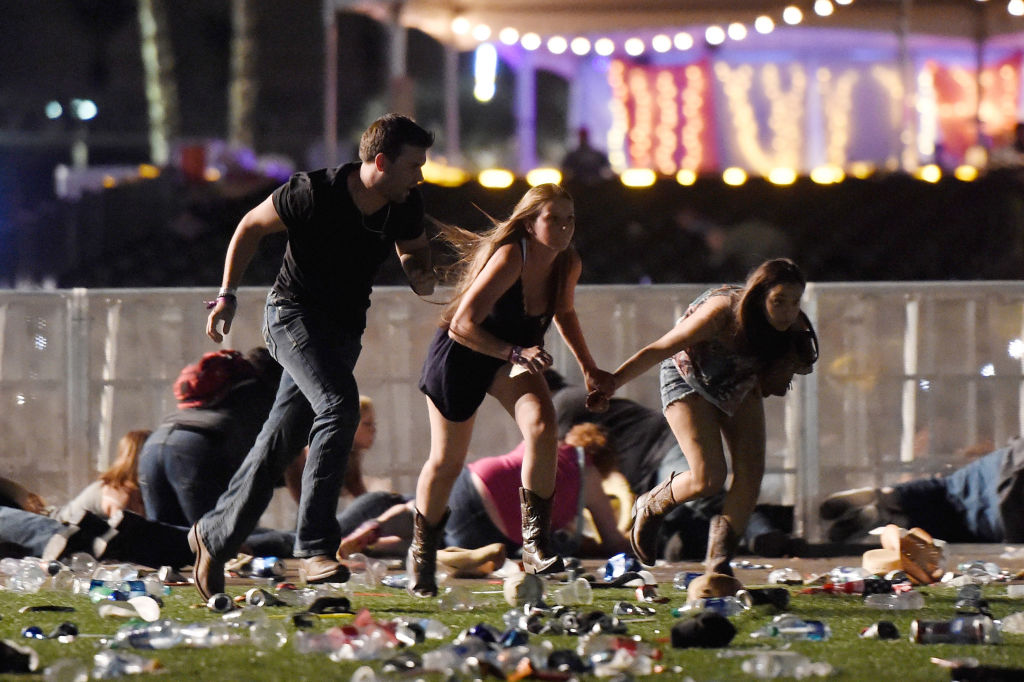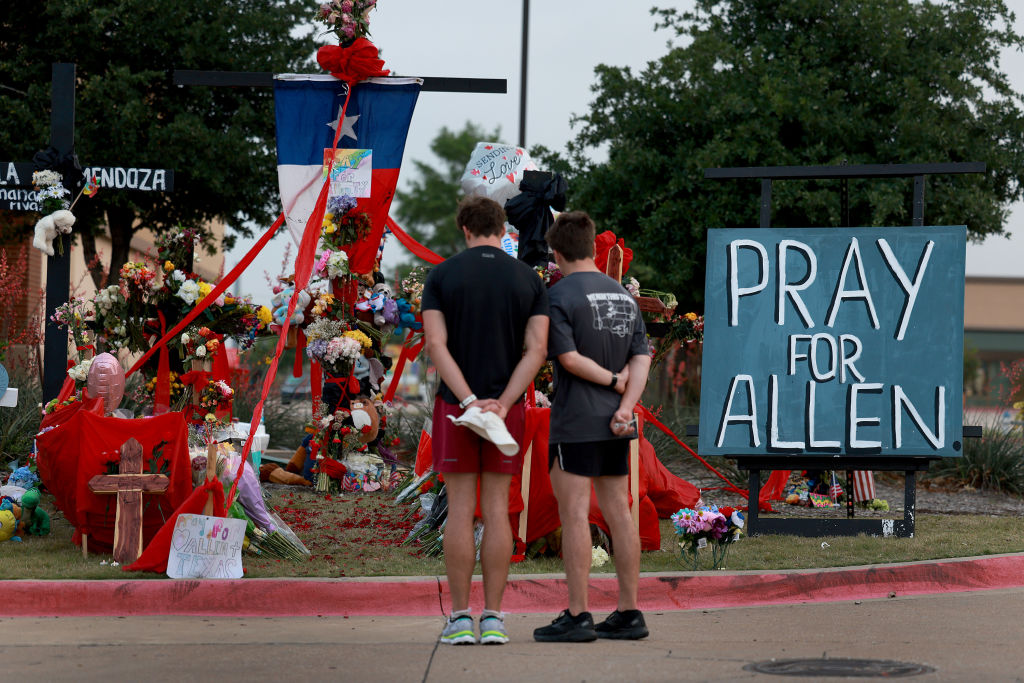
After a mass shooting on Saturday at an outlet mall in Allen, Texas left eight victims dead and seven injured, an FBI training video from 2020 began circulating on Twitter, depicting strategies for how to survive a mass shooting.
The video has received over 4 million views on the platform, with many commenters expressing dismay over its treatment of a mass shooting as an eventuality.
“Aside from how terrible it is that the FBI is saying, ‘The best we can do is train you to survive mass shootings,’ it’s notable how the core message of this video is that every setting in life should be viewed through the lens of hyper-vigilance and the likely need for combat,” posted one user.
“Ultimate pull-yourself-up by your own bootstraps: ‘You can survive a mass shooting, if you’re prepared,’” said another.
The video is a part of the FBI’s “Run. Hide. Fight.” campaign, which advises three different ways victims can respond to mass shootings to save themselves. It’s one example of how the threat of mass shootings has permeated every aspect of American life, and how the response—from preparing students with drills in schools to government-created public service videos—largely places the onus on the victims to fight for their own survival.
“It assumes we are going to live in a violent culture and be responsible for our own survival,” says Jennifer Dineen, an associate professor at the University of Connecticut, whose research focuses on gun injury prevention.
Read More: Raising Children in America Means Living in Fear That They’ll Be Shot
Run. Hide. Fight.
The viral FBI training video depicts people at a bar who find themselves caught in an active shooter event. The actors play out different responses for survival, with some running down a stairwell, others barricading themselves in a back room, and another group ultimately fighting and helping to apprehend the shooter.
“Law enforcement professionals are continuously training to respond faster, safer and more effectively to active shooter attacks. However, in most attacks, there will still be a few minutes before police arrive,” the FBI said in a statement to TIME. “During those few minutes the decisions made, and actions taken by those present can save many lives. The Run, Hide, Fight decision making tool helps individuals make the best decision for their survival, based on their unique circumstances.”
Dineen notes that the advice fails to account for the reality of an active shooter situation, in which an individual’s fight-or-flight response might not be as immediate—and following those steps would not guarantee survival. “It implies that there can be a linear progression. That’s not necessarily true.”

An individual who finds themself in an active shooter situation might not respond as quickly as the video depicts—imagining, for example, that they’re hearing firecrackers before they register as gunshots, says Emily Greene-Colozzi, a criminology assistant professor at the University of Massachusetts Lowell.
“Having this expectation that people will respond in a certain way might be missing out on the human response to something that is incredibly shocking,” says Greene-Colozzi. “It skips over the important step of recognizing a dangerous situation and assumes people can make rational conclusions.”
“Run. Hide. Fight.” can’t take into account the varying environments of an active shooter situation, or an individual’s familiarity with their location. Greene-Colozzi says the concept “‘presupposes that you know where to run or that you’re in the type of environment where the only alternative you have is to fight, because you can’t hide. If you’re in a bar, or a mall that you’ve never been to before, your first reaction might be to just stand there looking around like, ‘Well, what what should I do?’”
Read More: How the AR-15 Rifle Became America’s Most Dangerous Weapon
Responsive vs. proactive
Dineen says that training like “Run. Hide. Fight.”—though not perfect—are necessary to keep people prepared to react to an increasingly common threat. “But if you really want to address gun violence, you have to look at the root causes,” she says.
Some states, like Washington, California, and New Jersey, have restrictions on the possession of assault weapons, but the laws can only be so effective without national coordination. “It is very difficult for a state to make good progress with reducing gun injury and deaths if their neighbors have very permissive gun cultures,” says Dineen.
In 1994, Congress passed the Public Safety and Recreational Firearms Use Protection Act, a federal assault weapons ban that prohibited the manufacture or sale for civilian use of certain semi-automatic weapons and banned magazines that could accommodate more than 10 rounds or more. However, the bill expired ten years later, and further attempts to reinstate a ban have not made progress in Congress.
There have been over 200 mass shootings in 2023. With the grim frequency of mass shootings in America, Greene-Colozzi says it’s necessary for people to do what they can to be proactive in mapping out their ability to face a reactive situation.
“It might be better served if ‘run hide fight’ is taken as a base framework for response,” she says.
Read More: How ‘Stand Your Ground’ and Similar Laws Work
How to prepare
Many have stumbled upon the video while scrolling through their Twitter feed, but simply watching it might not be effective, Dineen says.
Ultimately, experts do believe that some kind of preparation is necessary for active shooter events, but it must occur in tandem with proper resources that help individuals process what they’re seeing and apply it to their own lives.
“It just does not complete the process of preparation, when we drop it on people without any support or information,” she says, “If you have someone who’s already anxious or is carrying trauma related to gun violence, there’s no support for them to process that at the moment which may impede their ability to internalize or think through the practice of the situation.”
Half of young people report thinking about mass shootings at least weekly, according to a study conducted by Project Unloaded, which is why Dineen emphasizes the importance of balancing training with conversations on the subject. Many schools employ lockdown protocols in the event of an active shooter, but some colleges do advise “Run. Fight. Hide” as their emergency action plan. Dineen adds that training done in school settings should include conversations addressing fears and anxiety and focus on how to apply the information to other environments.
“I’m not debating or downplaying the fact that this is a really scary thing for people to think about, especially children, and that there isn’t potential trauma here,” says Dineen. “But there is also potential for increased survival with appropriate guidance.”
More Must-Reads From TIME
- The 100 Most Influential People of 2024
- The Revolution of Yulia Navalnaya
- 6 Compliments That Land Every Time
- What's the Deal With the Bitcoin Halving?
- If You're Dating Right Now , You're Brave: Column
- The AI That Could Heal a Divided Internet
- Fallout Is a Brilliant Model for the Future of Video Game Adaptations
- Want Weekly Recs on What to Watch, Read, and More? Sign Up for Worth Your Time
Write to Simmone Shah at simmone.shah@time.com